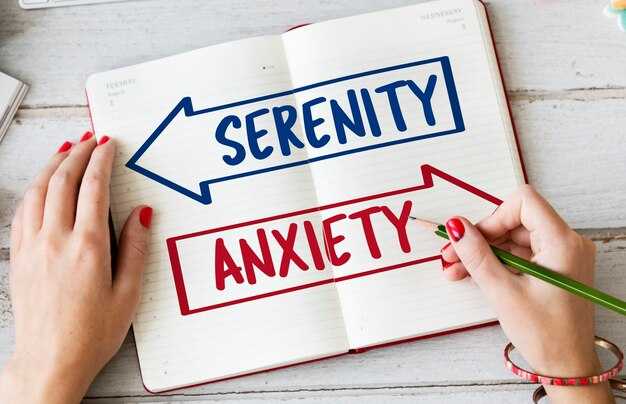Have you ever been in a relationship where one moment everything feels warm and close, and the next your partner seems to withdraw without warning? You sit there wondering, “What changed? Did I do something wrong? Are they losing interest or putting me through some kind of test?” If that resonates, you’re in the right spot. Hello, I’m Mill Robbins. Over many years I’ve guided people toward greater success in business, life, and relationships, and there’s one thing I wish someone had explained to me earlier: that push-and-pull dynamic with an avoidant partner rarely happens by accident. It’s not that they don’t care — more often than not, they’re giving subtle, unconscious tests to decide whether you’re dependable enough to stay. The problem is we usually misinterpret those moments as rejection, when they’re actually assessments of trustworthiness, honesty, and long-term fit. Today I’ll outline the hidden checks avoidant partners commonly use before committing. By the end you’ll understand why they test you, the seven most common forms those tests take, and how to respond in ways that invite closeness rather than trigger further withdrawal. Because make no mistake: people with avoidant attachment styles aren’t incapable of love or feeling affection — they’re guarded. Once you learn how they experience love, you’ll stop doubting yourself and begin creating the relationship you want. Before we jump into the specific tests, it’s crucial to grasp what’s happening inside someone who has an avoidant attachment pattern. Without that context, you’ll keep misreading their moves and end up confused and hurt. So let’s simplify it. An avoidant person doesn’t reject love; many long for it deeply. The issue usually begins early in life: perhaps a caregiver was inconsistent, emotional needs were punished, or independence was prized while feelings were dismissed. The result is a defensive shell — protective armor that looks like strength and self-sufficiency on the outside but hides softness and longing on the inside. Picture an avoidant like a turtle: when things feel safe, they cautiously emerge, curious and affectionate; the instant they sense pressure or a possible threat — a fight, a demand, or too much too soon — they pull back into their shell. It’s not personal dislike; that shell has been their survival mechanism for years. The difficulty arises because partners often interpret that retreat as personal failure, then respond by chasing, pushing, or demanding clarity, which only deepens the cycle. The reality is their withdrawal is about managing fear — fear of control, fear of losing autonomy, fear of being hurt again. The encouraging news is that strong, loving bonds with avoidant partners are possible if you comprehend what lies beneath their behavior. Their testing isn’t malicious; it’s a cautious way of asking, “Can I trust you with my feelings? Will you honor my independence? Can you see past my defenses and love me anyway?” Viewing their actions through that lens transforms your reactions from insecurity to empathy, and that shift can change everything. Now, let’s examine the first test many avoidant partners administer: the honesty test. Early on, or at pivotal moments when things feel more serious, an avoidant might drop a blunt or uncomfortable truth and then observe how you reply. Why do they do that? Because they dread relationships where speaking honestly leads to blowups or abandonment. The honesty test asks, “If I speak plainly, will I still be safe here?” Picture being at dinner when your partner says something that stings — maybe, “I don’t want drama in a relationship.” Your immediate thought might be, “Are you calling me dramatic?” From there you have two routes: react defensively and escalate, confirming to them that honesty brings conflict, or take a breath, respond with calm curiosity, and show you can handle candidness without retaliating. One reaction shuts down future honesty; the other invites it. Another version: they might claim, “I don’t argue to win; I argue to understand.” Whether that’s always true is beside the point — they’re checking whether you’ll respect their perspective rather than attacking it. Because many avoidants learned that truth-telling led to hurt, this kind of test is actually an act of vulnerability. Meeting it with steadiness and grace signals you’re a safe person to be real with, and that’s where trust begins. The second test centers on integrity. Avoidant partners weigh actions against words. For them, honesty and loyalty aren’t optional niceties — they’re survival cues. If in childhood promises were frequently broken or words didn’t match deeds, adults with avoidant tendencies become alert to inconsistency. How does this show up? They pay attention to whether you follow through, how you speak about others, and whether you take responsibility when things go wrong. Casual gossip about an absent friend, constant blaming of others, flirting openly in front of them, or keeping little secrets can all trigger their alarm: “If they talk about others this way, what will they say about me?” Integrity tests are less about perfection and more about reliability: saying what you mean, honoring commitments, and treating people kindly even when they’re not present. When your behavior and words align, avoidants relax and realize this might be a safe person to trust. The third test is the simplicity test, and it often trips up people who equate love with fireworks and grand gestures. Avoidant partners typically express care through small, steady acts: a quiet night in, a text asking how your day was, sitting beside you on the couch. Their idea of love is consistency — showing up in routine ways rather than dramatic displays. If you need constant excitement, these gestures can feel underwhelming, making you wonder if they’re bored or uninterested. But for an avoidant, a low-key dinner, being present when you’re sick, and regular small acts of care are the true markers of commitment. If you appreciate those moments and treat them as meaningful, you communicate that you don’t require performance to feel loved. That acceptance reassures them they don’t have to pretend to be someone else to keep you, and that realization can be transformative. The fourth test deals with timing and patience. Avoidant partners often move deliberately — they avoid labeling relationships too quickly and resist rushing into commitments. Many people interpret this caution as stalling or a lack of affection, but for avoidants it’s protection. Their fear is losing autonomy or becoming trapped. So they test whether you can be patient with the relationship’s natural pace. For example, when one person wanted a defined relationship after six months and the avoidant hesitated, the partner’s calm reply — “I care about you and I’m happy with how things are now; let’s see how it grows” — removed pressure and later led him to propose commitment on his own. That doesn’t mean you should ignore your own needs or wait indefinitely; your timeline matters. But flexibility and the ability to communicate your needs without forcing their pace often make them feel safe enough to take the next step on their own terms. The fifth test is about lifestyle compatibility. Avoidant people often have particular routines, priorities, and preferred rhythms — early morning workouts, focused work schedules, a small social circle, quiet evenings over party nights. Before they commit, they quietly assess whether your life can fit beside theirs without feeling like a takeover. They might invite you into their daily world — a favorite coffee shop, a night of shared work, or a routine weekend — and watch how comfortable you are in that space. If you react with restlessness or criticism, they may worry that being together means losing themselves. But if you lean in and find pleasure in their quieter habits while retaining your own identity, you demonstrate balance. That acceptance shows them you can coexist without demanding they change, which to many avoidants feels like genuine intimacy. The sixth test is respect for autonomy, arguably the most crucial. Independence is essential to avoidant partners — they need alone time and assurances they won’t be swallowed by the relationship. So they monitor whether you honor that boundary or try to control their schedule and choices. When an avoidant says, “I’m going away for a weekend with friends,” they’re watching your reaction: do you guilt them or clamp down, or do you respond with trust and encouragement? Requests for space are not rejections but a means of regulation; solitude helps them recharge and return more present. If you can support their autonomy without panic or manipulation, you prove you can love them in the way they need, which often leads to them lowering defenses. The final test concerns long-term vision and dreams. Avoidant partners aren’t just sizing up how you behave today; they want to know whether you can accept their future aspirations. They’ll reveal hopes or big ideas — moving across the country, starting a business, taking an extended trip — and gauge whether you respond with curiosity and support or with dismissal and fear. If you critique or shoot down their dreams, they hear, “You want me to shrink so you feel safe,” which can be a deal-breaker. But if you listen, ask questions, and show openness to how their goals might fit into a shared future, you pass a significant test of acceptance. Supporting their vision doesn’t require sacrificing yours; it means holding space for both dreams and showing you can imagine a future that includes them. After reviewing these seven tests, the practical question becomes: how do you act so that you invite closeness rather than provoke retreat? First and foremost, don’t take the tests as personal attacks. They’re defensive responses, not traps meant to humiliate or reject you. The aim isn’t to perform but to be authentic, patient, and self-respecting. Here are concrete ways to respond: stay composed in honesty moments — when they speak plainly, breathe and reply calmly so they see honesty won’t lead to catastrophe; live your values — demonstrate loyalty and consistency through your actions, not just words; embrace simplicity — value the small steady gestures as real expressions of care; respect their pace — communicate your needs clearly but avoid forcing their timeline; blend lifestyles — find overlap rather than trying to change one another, preserving your individuality while enjoying their world; protect their autonomy — support their solo time and projects, recognizing that space is how they regulate; encourage their dreams — be curious and open when they share long-term hopes, even if those dreams differ from yours. Responding this way doesn’t merely help you pass tests; it reshapes the relationship dynamic from tension to trust, from fear to safety. Avoidant partners aren’t trying to push you away — they’re testing whether you’re the person who can stay. Meeting those moments with steadiness, compassion, and clarity gives them what they need most: a safe place to love. To summarize, the seven pre-commitment tests often used by avoidant partners are honesty, integrity, simplicity, patience/timeline, lifestyle compatibility, respect for autonomy, and acceptance of long-term dreams. Remember: they test because they’re protecting themselves while yearning for connection. If you’ve been feeling unsure, know that you’re not too much, broken, or unworthy — you’re simply navigating a partner’s protective behaviors that can still lead to a deeply fulfilling relationship when met with understanding, consistency, and respect. So flip the question from “Why are they pulling away?” to “How can I show up in a way that creates safety?” That change in perspective can transform everything. Which of these tests have you noticed in your relationships? Share your experience in the comments — every story is read. If this video clarified things for you, like, subscribe, and pass it along to someone who needs guidance. Love isn’t about chasing or forcing; it’s about understanding. Understanding is how you build the connection you deserve.



 7 SECRET TESTS You MUST Pass for AVOIDANTS to CHOOSE YOU | Avoidant Attachment Style">
7 SECRET TESTS You MUST Pass for AVOIDANTS to CHOOSE YOU | Avoidant Attachment Style">

 Don’t Let These Attachment Styles Hurt Everyone (4-Video Compilation)">
Don’t Let These Attachment Styles Hurt Everyone (4-Video Compilation)">
 How much PAIN have you BURIED in your Marriage?">
How much PAIN have you BURIED in your Marriage?">
 Quick Technique to Instantly Change How You See the World">
Quick Technique to Instantly Change How You See the World">
 Get Out of Romantic Obsession And Open Your Life to Real Love">
Get Out of Romantic Obsession And Open Your Life to Real Love">
 Anxious vs Avoidant: The Dramatic Relationship Trap You Can’t Escape | Avoidant attachment style">
Anxious vs Avoidant: The Dramatic Relationship Trap You Can’t Escape | Avoidant attachment style">
 Why You Might Still Feel Lost — EVEN After Therapy, Courses & Trying Everything">
Why You Might Still Feel Lost — EVEN After Therapy, Courses & Trying Everything">
 When the Bedroom becomes a Chore…">
When the Bedroom becomes a Chore…">
 I Had No Friends… But Here’s What Finally Changed">
I Had No Friends… But Here’s What Finally Changed">
 Why Avoidants Only Chase You When These 3 Hidden Needs Are Triggered | Avoidant attachment style">
Why Avoidants Only Chase You When These 3 Hidden Needs Are Triggered | Avoidant attachment style">
 Commitment means MORE than not Getting Divorced">
Commitment means MORE than not Getting Divorced">